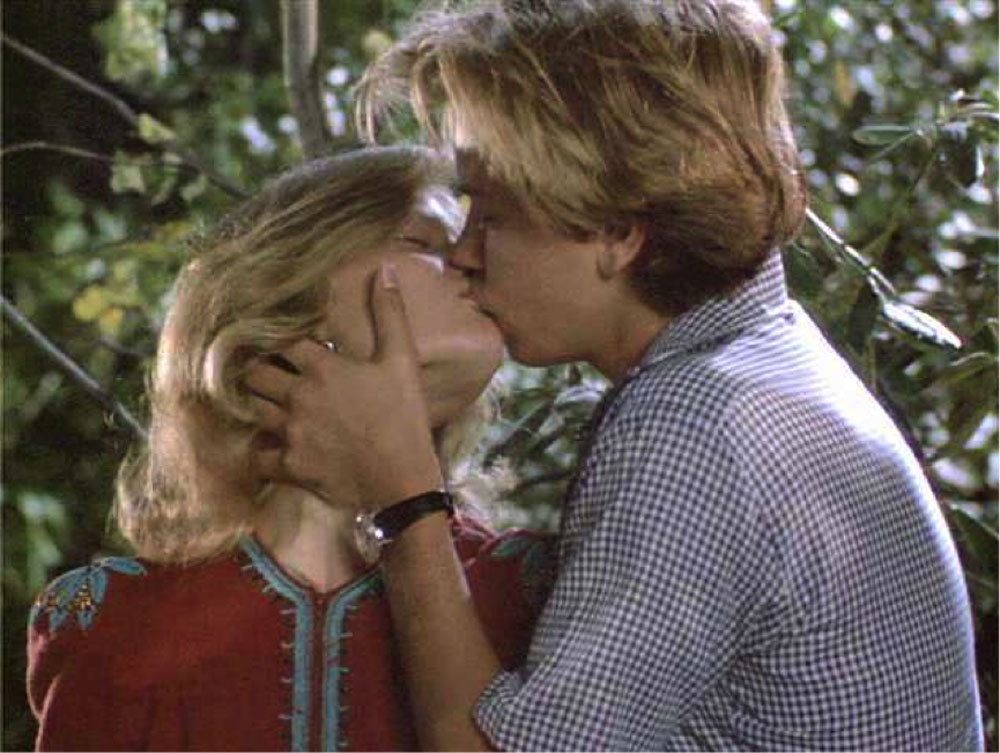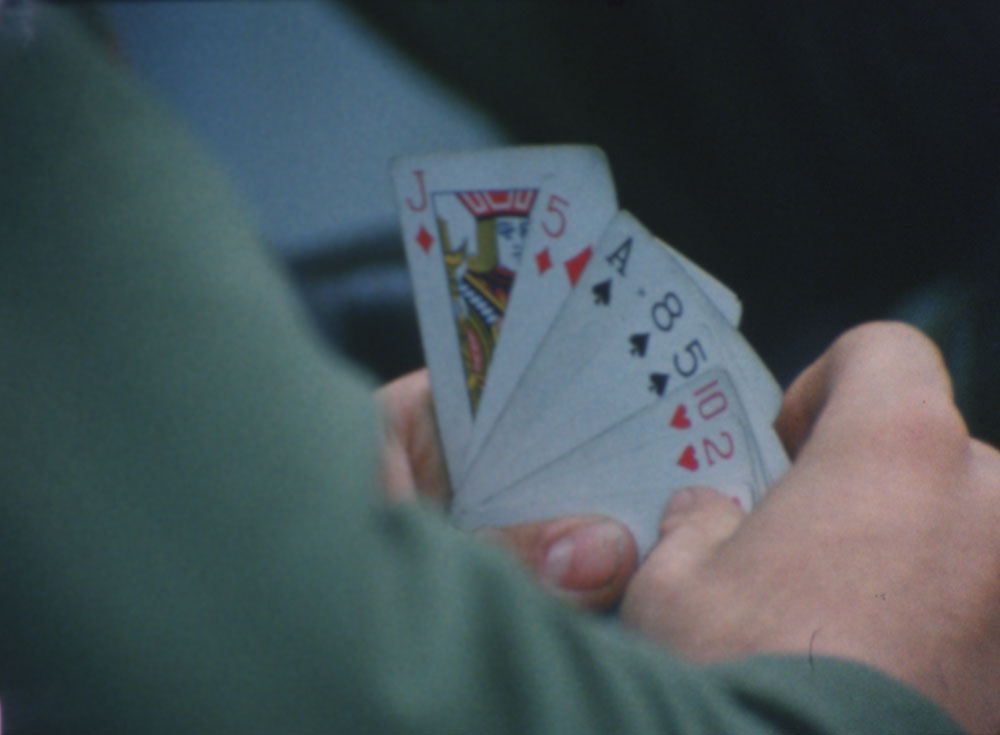Portfolio: Benjamin Crotty
The Iraq War, an opera singer and River Phoenix in Running on Empty: the Paris-based filmmaker shares his selection of significant images
The Iraq War, an opera singer and River Phoenix in Running on Empty: the Paris-based filmmaker shares his selection of significant images


Artist’s brother and artist’s brother’s wife, Iraq, 2007
My little brother and his wife were both sent to Iraq in 2007, separately, but simultaneously. This photo was taken during one of the rare moments they spent together that year.
This image interests me for several reasons. Firstly, something about it seems fake. It reminds me of a staged moon landing, or at least it’s how I’d imagine a staged moon landing would be, which is to say low budget. No weapons (props), no other soldiers (extras), no planes, tanks or buildings (sets). Was this photo taken in Iraq or on the periphery of a Walmart parking lot in Fresno? It’s hard to say.
Secondly, they look good (hot?), like two corn-fed kids playing dress-up. Sun-kissed and lithe, war becomes them. The collegiate légèreté of the pose, the duck face: it’s all working.
Unsurprisingly, the dubious ‘truth claim’ and sexy nonchalance of the photograph belie both the unsavoury geopolitical reality of the day and my brother’s lived experience of the conflict. It was the second Bush presidency, weapons of mass destruction had conspicuously not been found and, in constrast to the photographic construction, it’s no fun to be a soldier in a war that no one believes in.
Back then, I also wondered what role my brother, an aspiring writer and gentle soul, had to play in this quagmire not-of-his-making. The photo conjured up macabre fantasies. Looking at it, I couldn’t help but imagine my brother, like some kind of later-day Billy Budd, dead. It would, I suppose, make sense (literary, poetical) for this innocent youth to die in a war orchestrated by cynical men. Sense out of nonsense.
Luckily, the world lacks poetic coherence and my brother and his wife survived just fine. But that idea of a pair of soldier-lovers performing a comic tragedy for the camera was definitely influential.

Kurt Kauper, Diva Fiction 1, 1996
Kurt Kauper was my painting professor for two years when I was an undergraduate at Yale. Kurt is probably most famous for the ‘Diva Fiction’ series (1996-2000), a collection of large oil paintings of fictional opera singers, composed from collaged sources. Sometimes Kurt himself would pose for certain parts of the body, giving the subjects a kind of queasy masculinity.
I would qualify these paintings as brazenly ugly but technically accomplished, and at the time I didn’t know if I liked them. But I did like Kurt. He had an unassuming proto-Normcore style (sensible haircut, Harry Potter glasses, detached librarian manner of speaking) that somehow reminded me of home. He was a rock of banality in a sea of art school bohemian posturing – the inverse of a diva. Really smart, too.
Kurt was also the first bona fide artist I was afforded the opportunity to observe at all directly, and I suppose it was the relationship between the artist and the work that ultimately fascinated me – the two together a confounding and profoundly weird pair.
I could never fully wrap my head around normie heterosexual Kurt’s appropriation of gay iconography in the work. (I should add that, at the time I was his student, Kurt was painting a series of large-format Cary Grant nudes.) A few years later, I read somewhere that Kurt’s apparent absence of desire renders the paintings clinical. I suppose that’s it: the subjects become vessels of his non-desire. Liberated from the sexualizing gaze, they attain some higher level of perversion.

Martha Plimpton and River Phoenix in Running on Empty, Sidney Lumet, 1988
Running on Empty is a 1988 coming of age movie directed by Sidney Lumet and starring River Phoenix as Danny Pope. In it, Pope must choose between his family, a band of left-wing terrorists on the run from the law, and his dream of becoming a classically trained concert pianist.
The film’s innovation lies in its sly inversion of the traditional young-artist-versus-family conflict. Whereas traditionally parents want their child to conform, here the parents are the utopian dreamers and Pope’s musical ambitions make him the conformist, dependent on an elite power structure (he applies to Julliard). When Pope finally decides to abandon his family and Marxism for music and Manhattan, it feels a bit like you are watching America sell out, or maybe the whole world (the Berlin Wall would fall the following year). And yet, how can you blame him? He just wants to play Mozart's Fantasia, K. 497, after all.
It’s a beautiful, sad film. Watching it now it feels very old, like another America, another way of speaking, another way of thinking.

Ronald Searle’s illustrations for Troilus and Cressida
This Ronald Searle illustration is a pretext to talk about the play they represent: Troilus and Cressida, Shakespeare’s parodic treatment of love, war, history and tragedy.
Like so much Shakespeare, it was a remake of sorts, the story being well known at the time. (Chaucer famously did a Troilus and Criseyde too.) It can be grouped with Romeo and Juliet and Antony and Cleopatra, as all three are concerned with the doomed romances of their titular couples, but Troilus and Cressida is by far the weirdest of the three (and could be read as a satire of the other two). Bleak and meta-textually loaded, the Trojan War set romance is cruel and emotionally unsatisfying (☺) but zany and even-handed in its ridicule of everything and everyone.

9th Infantry Division Movement, Oakland, California to Vungtau, South Vietnam, still image from unedited 16mm film, 1966
One of my brothers used to work at the National Archives in Washington D.C. While he was there I became interested in their moving image collection, and I have gone back to it periodically ever since. Most of the stuff I look at is Vietnam War era, unedited, silent 16mm footage shot by soldiers. I’m not sure what purpose most of it was initially intended to serve, and I’m not even sure those shooting it knew either – or those who commissioned it, for that matter. The style varies greatly from reel to reel as the camera passes from one soldier-cameraman to the next: some are loose and oneiric, others are formally rigorous; some focus on the landscape and faces, others on hands and birds.






















